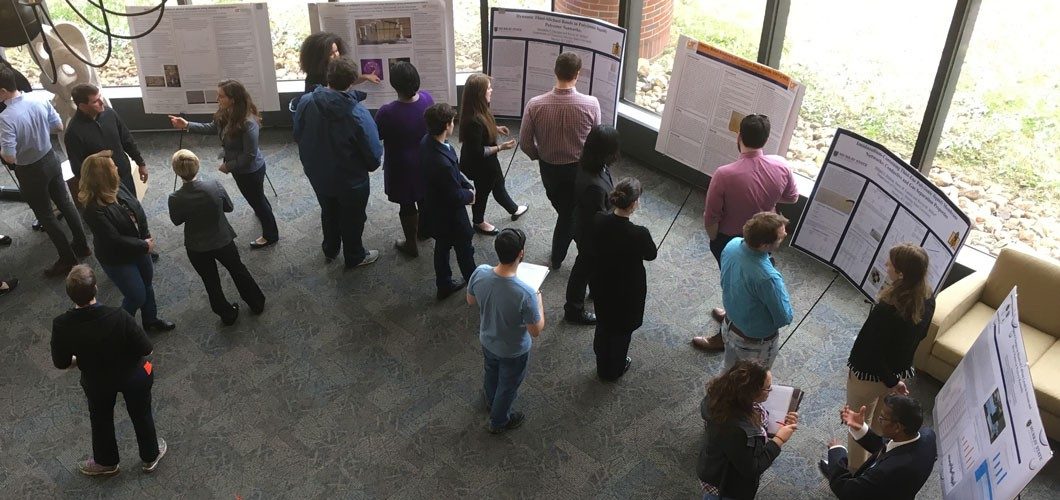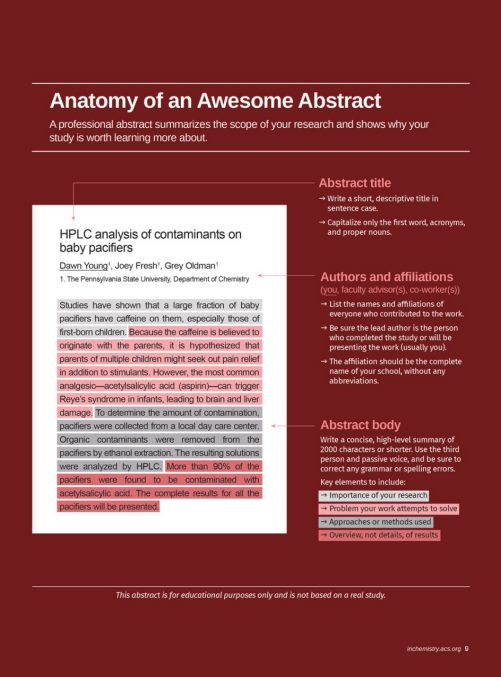How To Write a Professional, Polished Scientific Abstract

In the science world, you make your first impression long before you meet anyone in person. How? Through an abstract—that brief, powerful paragraph that describes your research.
Whether it’s for a conference presentation, journal article, grant proposal, or dissertation, the abstract—as well as the title and the author listing—is the first window into the scope and purpose of your work. It tells the reader about the content of your research and the results of your experimentation. And it tells the reviewer or editor which session or journal you belong in, so potential collaborators can find you.
To show that your research is relevant and worth learning more about, you need to write a polished and professional abstract. Here’s how to write titles, author listings, and text for abstracts that are informative and professional in any presentation format.
The title
Keep your title short and descriptive. Don’t oversell or sensationalize your work; simply state what it is. If you absolutely must give detail, you can add a subtitle, using a colon to separate it from the main title.
Reviewers start with the title to make sure they have you in the right session. For example, “C–H bond functionalization in long-chain alkanes” will be placed in an Organic Chemistry session, whereas “Iron oxide catalysts for hydrocarbon C–H bond functionalization” will be placed in an Inorganic Chemistry session.
Scientists use titles to see whether your work is relevant to them. If you write “Curing genetic diseases through molecular modeling”,
you had better have the clinical trial data to back up your claim.
“Molecular basis of multiple mitochondrial dysfunctions syndrome: Impact of substitution on the protein NFU1” will be of interest to other biochemists studying protein functionality.
Here are some additional technical tips for titles of scientific abstracts:
- Start with an adjective, a noun, or a verb. Never start with an article (e.g., “The”, “A”, or “An”).
- Do not end with punctuation; your title is not a sentence.
- Use plain text (no bold, italics, or special fonts).
- Use sentence case. The only words that need to be capitalized are the first word of the title, the first word after a colon, and any proper nouns, acronyms (e.g., FT-IR), or element symbols in formulas (e.g., NaOH).
The authors and affiliations
List the names and affiliations of everyone who contributed to the work, starting with you. If you are submitting the abstract for an oral or poster presentation, you are the presenting author and your name goes first. If you are submitting an article to a journal, your name will either go first or be highlighted in some fashion. (It depends on the protocols of the journal and the preferences of your research advisor.)
You also need to include your research advisor. With the exception of some very unusual circumstances, your project is part of a larger body of research that is coordinated by your advisor. Your advisor helped you to develop your project, guided your interpretation of the results, and provided you with laboratory space and supplies, and your results will be incorporated into your advisor’s overall body of research. So your advisor gets credit.
You should include anyone else who contributed significantly to the research, such as a labmate who performed some of the work or a colleague in another lab who assisted you with analyses.
Include your affiliation as well as that of your coauthors. Your affiliation is your school. For clarity, be sure to cite the complete name of your school, not an abbreviation or short form (e.g., use “California Institute of Technology”, not “Caltech”). Unless you are collaborating with a group outside of your department or doing research at another institution, your coauthors will have the same affiliation as you.
The body
Abstracts are high-level summaries. They are typically no longer than 2000 characters (preferably shorter than 1000 characters). Using complete sentences, describe why the work was done, what types of experiments were completed, and the results. You are writing for other scientists, so you do not need to explain common scientific terms, only techniques specific to your research. This guideline will help you stay within the character limit.
Keep it simple. Experimental parameters, data, graphs, references, and extensive discussion of the results are for your presentation or article. If you find yourself trying to include these details, you are saying too much. Some abstract submission systems, like the ACS Meeting Abstracts Programming System (MAPS), do not accept graphs, figures, or references, so you run the risk of being rejected from a symposium. There are instances when a graph or figure is necessary, but they are the exception.
Here are some key elements to keep in mind as you are writing:
- Why is your research important?
- What problem does your work attempt to solve?
- What specific approaches did you take or methods did you use?
- What were the results?
- How does your research add to the body of knowledge?
Keeping the abstract general helps with the challenge: having to submit your abstract before you complete your research. This is especially common if you are presenting at a technical conference, like an ACS national meeting, where submissions are due six to seven months before the conference. In this case, you can submit a short abstract of the work you are planning to do, and end with, “The results of this work will be presented.”
Write in the third person using passive voice (e.g., “Microporous silicates were synthesized” rather than “I synthesized a series of microporous silicates”). In the scientific community, this is the more professional way to present research.
Finally, proofread, proofread, and proofread again. Make sure that your sentences are clear and error-free. Have a peer, grad student, or experienced labmate (or two) review your abstract for clarity, grammar, and punctuation. Also, have your research advisor review and approve it. This work represents your advisor’s lab, so your advisor should have a say in what you report.
Writing abstracts is a skill that is essential to both the research world and the business world (where it’s called an “executive summary”). Start developing this skill now to set yourself up for success later.
ABSTRACT
CHALLENGE
See if you can spot the errors in this online quiz!
Reference
How to Write an Undergraduate Abstract, by Elzbieta Cook. www.acs.org/content/acs/en/meetings/national-meeting/agenda/student-program/undergraduate-abstract.html





